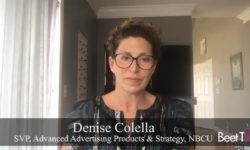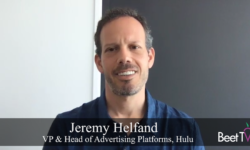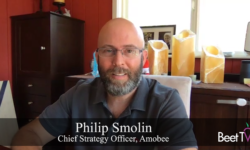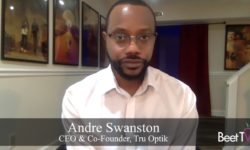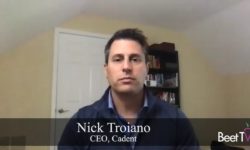LAFAYETTE, CA — We all know the global COVID-19 pandemic is up-ending the rules of business and accelerating trend lines that were already unfurling beforehand.
But exactly how do new media habits provoked by the pandemic change the game for marketers?
In this video interview with Beet.TV, Oracle’s Michelle Hulst – GVP, Marketing & Strategic Partnerships, Oracle Data Cloud – explains ways in which new normal will force marketers to change tack:
- Understanding consumers who are spending more time with at-home devices.
- Getting a handle on customers who may be trying products for the first time.
- Contextual ad targeting is becoming a necessity
1. Accounting for at-home
“Almost anyone that’s a CEO or a company leader that I’ve spoken with … definitely part of their plan going forward is to have some portion of their employee base work from home,” says Hulst. “So it’s going to be more important than ever to understand how your consumers are consuming media.”
Once upon a time, marketers could use cookies, tiny text files stored on users’ devices, to track them. But cookies’ utility had been waning in the mobile era and had declined further because of the reality that most modern consumers now use multiple devices in multiple locations across the day.
Gaining a holistic understanding of an individual user’s behavior has become the key imperative in marketing. Hulst thinks COVID-19 accelerates that.
“That’s become even more important now because you have an accelerated transition to digital devices,” she says. “Think about people that weren’t interacting from a digital standpoint in large volumes before, they are all doing that now.
“So it’s more important than ever as an advertiser, as a marketer, to know that you’re reaching your consumers with a consistent message … depending on if you’re reaching them on their phone or their laptop or through a streaming device.”
2. Understanding new customers
The pandemic has thrown everything up in the air, including supply chains and consumer habits.
Not only are audience members spending more time than ever with media, they are also making new purchasing decisions. Hulst thinks it is imperative that makers of those products and services understand what is going on, and how to make it stick.
“In the grocery store right now, when I go in to buy something, a lot of times brands that I’m loyal to aren’t available on the shelf and so I’m forced to switch and try a new brand,” Hulst says.
“So there is a lot of new trial happening among consumers right now. If I’m that brand that’s being tried, I want to a) know that somebody actually tried me for the first time and b) understand how I’m going to engage with them and try to encourage them to stay loyal to me.”
3. Context is king
Many publishers’ wounds have been weeping since ad buyers began using brand safety tools’ keyword blacklisting features to bypass inventory against virus-related news stories, or even opt out of news altogether.
That is pushing many news organizations to the brink. But a growing procession of ad agency and technology provider is also stepping up to say it doesn’t help brands either.
Oracle’s Hulst calls this blocking a “blunt instrument” and “a bad thing”. She thinks there are many virus-related news stories that represent positive opportunities for adjacency.
Increasingly, companies are saying that understanding those opportunities will require technology that can go beyond simple keyword-based blocking. In that space, “contextual targeting”, which can run analyses on content in order to serve up more granular cues about things like sentiment and topicality, is emerging a possible solution.
This video is part of a series titled Navigating Accelerated Change, presented by Transunion. For more videos, please visit this page.






